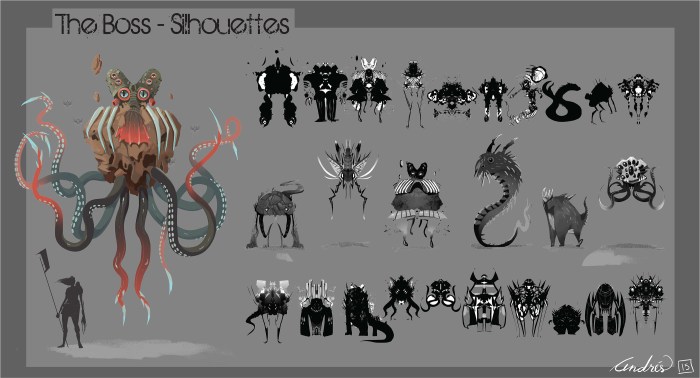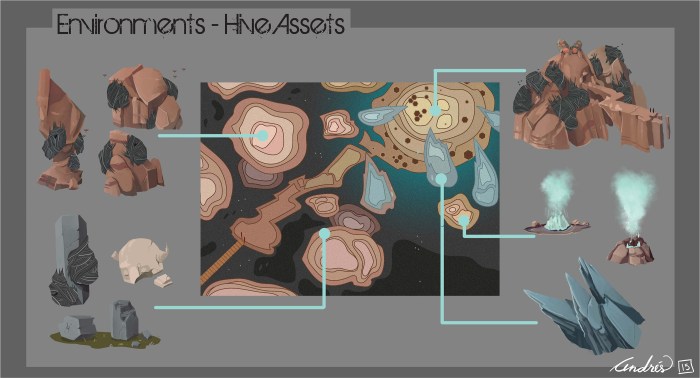Concord Concept Art sets the stage for this enthralling narrative, offering readers a glimpse into a story that is rich in detail and brimming with originality from the outset. This journey through the pages of history and culture will explore the multifaceted legacy of Concord, Massachusetts, a town that has left an indelible mark on the American consciousness.
From the iconic Battle of Lexington and Concord that ignited the American Revolution to the literary giants who graced its streets, Concord has been a crucible of innovation and inspiration. This exploration will delve into the town’s historical significance, its thriving arts scene, and its enduring presence in popular culture, showcasing how Concord’s legacy continues to resonate in the present day.
The History of Concord

Concord, Massachusetts, is a town steeped in history, renowned for its pivotal role in the American Revolution. Its name, derived from the Latin word “concord,” signifies harmony and agreement, a fitting moniker for a town that would become a symbol of resistance against British tyranny.
The Battle of Lexington and Concord
The Battle of Lexington and Concord, fought on April 19, 1775, was a defining moment in the American Revolution. It marked the beginning of the armed conflict between the American colonists and Great Britain, ultimately leading to the establishment of the United States of America.The battle was a direct consequence of British efforts to seize colonial military supplies stored in Concord.
British troops, under the command of Lieutenant Colonel Francis Smith, marched from Boston to Concord, intending to confiscate these supplies and suppress the growing colonial rebellion. The British forces encountered fierce resistance in Lexington, where a small contingent of colonial militia, known as the “Minutemen,” engaged in a brief but bloody skirmish.
The British then marched on to Concord, where they faced further resistance from the colonial militia. The British, outnumbered and outmaneuvered, were forced to retreat back to Boston, pursued by colonial militia.The Battle of Lexington and Concord had a profound impact on the course of the war.
It ignited the flames of rebellion throughout the colonies, galvanizing support for the cause of independence. The battle also demonstrated the colonists’ determination to fight for their freedom and proved to the British that the rebellion was not easily suppressed.
The “Shot Heard ‘Round the World”
The Battle of Lexington and Concord is often associated with the phrase “the shot heard ’round the world,” a line from the poem “Concord Hymn” by Ralph Waldo Emerson. This phrase symbolizes the global significance of the American Revolution, signifying the beginning of a struggle for liberty and self-determination that would resonate far beyond the shores of North America.The “shot heard ’round the world” represents the moment when the American colonies declared their defiance of British rule and embarked on a path towards independence.
It marked a turning point in history, not only for America but also for the world, inspiring other nations to fight for their own freedom and self-governance.
Concord in Modern Times

Concord, Massachusetts, is a vibrant community that seamlessly blends its rich historical heritage with a modern, forward-thinking spirit. The city’s charm, rooted in its past, continues to attract residents and visitors alike, making it a thriving hub of culture, commerce, and community.
The Arts Scene in Concord
Concord boasts a thriving arts scene, with a diverse range of artistic expressions that cater to a variety of tastes. The city is home to numerous art galleries, theaters, and music venues, showcasing the talents of both local and international artists.
- The Concord Art Association, established in 1919, is a prominent organization that hosts exhibitions, workshops, and events, fostering the appreciation of art in the community.
- The Concord Players, a community theater group, has been entertaining audiences with high-quality productions for over a century. They present a wide range of plays, musicals, and other performances, showcasing the talents of local actors and artists.
- The Concord Orchestra, founded in 1963, is a professional orchestra that provides a platform for classical music enthusiasts in the region. They offer a season of concerts featuring renowned soloists and conductors, enriching the cultural landscape of Concord.
Concord’s Economic Landscape
Concord’s economy is characterized by a mix of industries, including technology, healthcare, education, and tourism. The city’s strategic location, proximity to Boston, and its strong educational institutions have contributed to its economic growth.
- The technology sector is a significant contributor to Concord’s economy, with several companies specializing in software development, cybersecurity, and data analytics.
- Healthcare is another key industry, with the presence of prominent hospitals and medical research facilities. Concord is home to Emerson Hospital, a leading healthcare provider in the region.
- Education plays a vital role in Concord’s economic landscape, with renowned institutions like the Concord Academy and Middlesex School attracting students from around the world. These institutions contribute to the city’s intellectual and cultural vibrancy.
- Tourism is a significant industry in Concord, with its historical sites, museums, and charming downtown attracting visitors from across the globe. The city’s rich heritage and cultural attractions make it a popular destination for both domestic and international travelers.
Contributions to the Region
Concord plays a significant role in the economic and cultural landscape of the greater Boston area. The city’s contributions to the region are multifaceted and far-reaching.
- Concord’s strong educational institutions provide a skilled workforce for the region’s growing industries. Graduates from these institutions contribute to the innovation and economic growth of the Boston area.
- The city’s thriving arts scene attracts visitors and residents alike, enriching the cultural landscape of the region. Concord’s artistic expressions contribute to the vibrancy and dynamism of the greater Boston area.
- Concord’s commitment to sustainability and environmental stewardship serves as a model for other communities in the region. The city’s efforts to promote green practices and protect natural resources contribute to the overall well-being of the Boston area.
Notable People and Places in Concord
Concord, Massachusetts, is a town steeped in history and literary significance. It has been a home to some of America’s most prominent writers and thinkers, whose works have shaped the nation’s cultural landscape. The town’s rich history and the legacy of its notable residents continue to draw visitors and inspire new generations of writers and thinkers.
The Literary Giants of Concord
Concord is renowned for its association with the Transcendentalist movement, a philosophical and literary movement that emphasized individual intuition and the inherent goodness of humanity. The town became a hub for Transcendentalist writers and thinkers, including Ralph Waldo Emerson, Henry David Thoreau, and Louisa May Alcott.
- Ralph Waldo Emerson, a prominent figure in the Transcendentalist movement, was a prolific essayist, poet, and lecturer. His influential works, such as “Nature” and “Self-Reliance,” explored themes of individualism, self-reliance, and the importance of connecting with nature. Emerson’s writings resonated with a generation seeking to break free from traditional societal norms and embrace individual freedom.
- Henry David Thoreau, a close friend of Emerson, was a writer, naturalist, and social critic. He is best known for his book “Walden,” a reflection on his two years spent living in a cabin in the woods near Walden Pond. Thoreau’s philosophy, which emphasized simplicity, self-sufficiency, and living in harmony with nature, continues to inspire people today.
- Louisa May Alcott, the author of the beloved novel “Little Women,” was a writer, activist, and humanitarian. She was raised in Concord and drew inspiration from the town’s literary and intellectual atmosphere. “Little Women” is a coming-of-age story that explores themes of family, love, and ambition, and it has resonated with readers of all ages for generations.
Walden Pond and Thoreau’s Philosophy, Concord concept art
Walden Pond, a serene body of water located near Concord, holds immense historical and philosophical significance. It is the site where Henry David Thoreau built his cabin and lived for two years, immersing himself in nature and reflecting on the meaning of life.
Thoreau’s experiences at Walden Pond are documented in his book “Walden,” a classic of American literature that explores themes of self-reliance, simplicity, and the importance of connecting with nature.
“I went to the woods because I wished to live deliberately, to front only the essential facts of life, and see if I could not learn what it had to teach, and not, when I came to die, discover that I had not lived.”
Henry David Thoreau, Walden
Thoreau’s philosophy, as expressed in “Walden,” emphasizes the importance of living a simple life, free from the distractions of society. He believed that by living close to nature, one could gain a deeper understanding of oneself and the world around them.
Walden Pond has become a symbol of Thoreau’s philosophy and a place where people can find peace, reflection, and a connection with nature.
Concord’s Literary Legacy
Concord’s literary legacy extends far beyond the Transcendentalist movement. The town has been a home to numerous other writers, poets, and artists who have contributed to American literature and culture. These include Nathaniel Hawthorne, a novelist known for his works like “The Scarlet Letter,” and the poet and critic E.A.
Robinson. Concord’s literary heritage is celebrated through various institutions, including the Concord Museum, the Thoreau Institute, and the Louisa May Alcott House. These institutions preserve the legacy of Concord’s literary giants and offer visitors a glimpse into the town’s rich cultural history.
The Concorde: A Supersonic Icon: Concord Concept Art
The Concorde, a symbol of technological advancement and luxury travel, was a groundbreaking supersonic jet that captivated the world. This Anglo-French collaboration redefined air travel, allowing passengers to experience the thrill of crossing continents at speeds exceeding the sound barrier.
The Concorde’s distinctive design, innovative engineering, and pioneering spirit left an enduring legacy in the realm of aviation.
The Concorde’s Design and Features
The Concorde’s design was a testament to the ingenuity of its creators. The aircraft’s slender, delta-shaped wings provided exceptional aerodynamic efficiency at supersonic speeds, allowing it to pierce through the sound barrier with minimal drag. The Concorde’s distinctive needle-nose design, which housed the aircraft’s cockpit, was a crucial element in reducing sonic boom intensity during flight.
Concord concept art often focuses on the iconic battle that took place there, and it’s a great way to visualize the historical significance of the location. If you’re interested in learning more about the battle itself, you can check out the lexington and concord date for a detailed timeline of events.
After exploring the historical context, you can delve deeper into the artistic representations of the battle, appreciating the nuances of the artist’s perspective.
The Concorde’s fuselage was also designed to minimize drag and maximize fuel efficiency, enabling it to achieve its remarkable performance.
A Timeline of the Concorde’s Journey
The Concorde’s journey spanned several decades, marked by milestones in its development, operational years, and eventual retirement.
- 1956:The Anglo-French agreement for the development of a supersonic airliner is signed, marking the beginning of the Concorde project.
- 1969:The first Concorde prototype takes to the skies, a significant step toward realizing the dream of supersonic passenger travel.
- 1976:The Concorde enters commercial service, marking the dawn of a new era in air travel.
- 2000:The Concorde suffers a tragic accident in Paris, leading to a decline in passenger confidence and a subsequent reduction in flights.
- 2003:The Concorde is retired from commercial service, ending an era of supersonic passenger travel.
Technical Specifications and Performance
The Concorde’s technical specifications and performance set it apart from other supersonic aircraft.
| Specification | Value |
|---|---|
| Length | 61.66 meters (202.3 feet) |
| Wingspan | 25.58 meters (84 feet) |
| Maximum Takeoff Weight | 185,000 kg (408,000 lbs) |
| Cruise Speed | Mach 2.04 (1,354 mph) |
| Range | 6,750 km (4,190 miles) |
| Passenger Capacity | 100-128 passengers |
Comparison with Other Supersonic Aircraft
The Concorde’s performance compared favorably to other supersonic aircraft, including the Tupolev Tu-144, the only other supersonic airliner to enter commercial service.
- Tupolev Tu-144:The Tu-144, a Soviet supersonic airliner, was designed to compete with the Concorde. While it achieved supersonic flight, it was plagued by technical issues and had a shorter operational lifespan.
- Other Supersonic Aircraft:The Concorde was the only supersonic airliner to achieve widespread commercial success. Other supersonic aircraft, such as the Lockheed SR-71 Blackbird and the North American XB-70 Valkyrie, were primarily military aircraft.
The Concorde was a marvel of engineering, pushing the boundaries of aviation and offering a glimpse into the future of air travel. Its legacy continues to inspire and captivate, reminding us of the extraordinary achievements that can be accomplished when human ingenuity and determination are combined.
Concord Grapes
The Concord grape, a beloved fruit with a rich history, is a testament to the ingenuity of American agriculture. This iconic grape variety, renowned for its distinct flavor and versatility, has captivated palates and shaped the landscape of food and beverage industries for over a century.
Its journey, from humble beginnings to widespread popularity, is a story of innovation, adaptation, and enduring appeal.
Cultivation and Characteristics
The Concord grape, a hybrid of the Vitis labruscaspecies, originated in the United States. In 1849, Ephraim Wales Bull, a Massachusetts farmer, meticulously crossbred two grape varieties, resulting in the distinctive Concord grape. Its thick skin, deep purple color, and sweet, slightly foxy flavor quickly made it a favorite among American consumers.
The Concord grape thrives in cooler climates and prefers well-drained soil. Its robust nature and adaptability have allowed it to flourish in various regions, from the Northeast to the Midwest.
Uses in Food and Beverages
The Concord grape’s versatility has made it a staple ingredient in a wide array of culinary creations.
Wine
The Concord grape is primarily used in the production of juice and jams. Its unique flavor profile lends itself well to sweet, fruity wines, known for their distinct aroma and vibrant color.
Juice
Concord grape juice, a popular beverage enjoyed by people of all ages, is a refreshing and healthy choice. Its natural sweetness and tartness make it a versatile ingredient in smoothies, cocktails, and baked goods.
Jams and Jellies
The Concord grape’s high pectin content makes it an excellent choice for jams and jellies. Its intense flavor and vibrant color create a delightful spread for toast, biscuits, and pastries.
Economic Significance
The Concord grape plays a significant role in the agricultural industry, contributing to the economic well-being of numerous communities. The grape’s widespread cultivation has created employment opportunities in various sectors, from farming and processing to packaging and distribution. The demand for Concord grapes and their products has fueled the growth of local economies and supported the livelihoods of many.
Other Places Named Concord

Concord, a name steeped in history and signifying harmony, is not limited to the iconic town in Massachusetts. The name resonates across the United States, adorning various cities and towns, each with its unique story and character.
A Comparative Look at Concordian Cities and Towns
The shared name “Concord” across these locations hints at a common thread, perhaps a yearning for unity or a connection to the historical significance of the original Concord. However, each location boasts its own unique history, geography, and cultural identity.
Let’s delve into a comparative analysis of these Concordian places.
| Location | State | Founded | Notable Features |
|---|---|---|---|
| Concord | Massachusetts | 1635 | Birthplace of the American Revolution, home to the famous “shot heard ’round the world”, rich literary heritage (Emerson, Thoreau, Hawthorne). |
| Concord | California | 1850 | Known for its vineyards and wine production, especially the Concord grape, a popular variety named after the town. |
| Concord | New Hampshire | 1765 | Located in the Merrimack Valley, a historical industrial hub, known for its granite quarries. |
| Concord | North Carolina | 1799 | A town with a rich history of agriculture and textile manufacturing, now a popular tourist destination. |
| Concord | Georgia | 1828 | A small town with a strong sense of community, known for its historical architecture and annual festivals. |
Reasons for Shared Name
The prevalence of the name “Concord” in various locations across the United States can be attributed to several factors:* Historical Significance:The original Concord, Massachusetts, holds a prominent place in American history, inspiring many settlers to name their new communities after it.
Symbolic Meaning
“Concord” evokes a sense of harmony, unity, and agreement, qualities that were desirable in the context of early American settlements.
Popularity of the Name
The name “Concord” was simply popular during the 18th and 19th centuries, a period when many new towns and cities were being established.
Honoring Roots
Some locations might have been named by settlers who originated from Concord, Massachusetts, or who had strong ties to the town.
Unique Characteristics of Each Concord
While sharing the name “Concord”, each location possesses its own distinct identity:* Concord, Massachusetts:The birthplace of the American Revolution, Concord is a town steeped in history, renowned for its literary heritage and beautiful landscapes.
Concord, California
This Concord is renowned for its vineyards and wine production, particularly the Concord grape, a popular variety named after the town.
Concord, New Hampshire
This Concord, located in the Merrimack Valley, is a historical industrial hub, known for its granite quarries.
Concord, North Carolina
This Concord boasts a rich history of agriculture and textile manufacturing, now a popular tourist destination.
Concord, Georgia
This Concord is a small town with a strong sense of community, known for its historical architecture and annual festivals.
Outcome Summary
As we conclude our exploration of Concord Concept Art, we are left with a profound appreciation for the town’s enduring legacy. From its pivotal role in the American Revolution to its rich literary heritage and vibrant cultural scene, Concord has left an indelible mark on the world.
The concept art presented here serves as a powerful testament to the town’s multifaceted history and its enduring impact on American society.